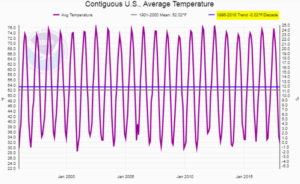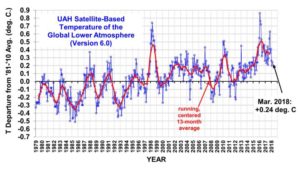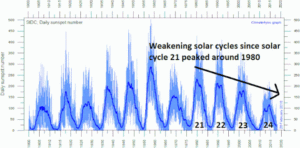by Tony Heller, May 2, 2018 in TheDeplorableClimateScience
Measured US temperatures show cooling over the last 90 years. This doesn’t suit the needs of the climate mafia, so NOAA massively alters the data to turn cooling into warming. NOAA cools the past by more than one degree, and warms the present by nearly one degree. Then other climate scientists use this fake data to confirm fake theories about CO2 emissions warming the planet.






